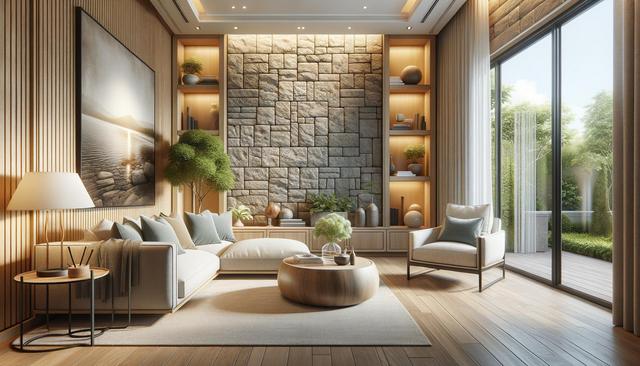What Are Faux Stone Panels?
Faux stone panels are decorative building materials designed to replicate the natural look and texture of real stone. Made from materials like polyurethane, high-density foam, or composite polymers, these panels are crafted to mimic actual stone surfaces with impressive realism. Unlike natural stone, faux stone is lightweight, easier to install, and typically more affordable. These attributes make it a practical choice for homeowners, designers, and contractors seeking to add character to walls and other surfaces without the labor and cost associated with real masonry.
One of the key advantages of faux stone panels is their adaptability. They can be used in a variety of applications, ranging from interior accent walls to exterior facades. The technology behind their design has significantly improved in recent years, allowing for greater durability and more intricate patterns, which further enhances their appeal as a decorative element.
Using Faux Stone for Interior Accent Walls
Interior accent walls are a popular design feature that can dramatically change the dynamic of a room. Faux stone panels serve as an excellent material for this purpose, offering texture and visual interest without overwhelming the space. Whether placed behind a fireplace, in a hallway, or as a backdrop in a living room, these panels help create a focal point that draws attention.
Here are some benefits of using faux stone for interior spaces:
- Easy installation with basic tools—no masonry experience required
- Wide variety of colors and patterns to match different decor styles
- Durable and resistant to indoor wear and tear
- Low maintenance compared to natural stone
Because the panels are lightweight, they can be installed without the need for structural reinforcement. This makes them especially suitable for DIY projects or quick renovations where time and budget are limited.
Enhancing Outdoor Features with Faux Stone
Faux stone panels are not limited to indoor use—they’re also a great option for enhancing outdoor surfaces. Designed to withstand varying weather conditions, many faux stone products are UV-resistant and waterproof, making them a reliable choice for exterior applications. They can be used on facades, garden walls, outdoor kitchens, or even patio columns to add a rustic or modern touch, depending on the selected style.
Common outdoor uses include:
- Surrounds for outdoor fireplaces or fire pits
- Decorative finishes for home exteriors or garage walls
- Cladding for pillars and retaining walls
With minimal upkeep required, faux stone panels can retain their appearance for years, even in challenging climates. This makes them an attractive solution for homeowners looking to boost curb appeal without committing to heavy stonework or high maintenance costs.
Installation Tips and Considerations
Installing faux stone panels is generally straightforward, making them appealing to both professionals and DIY enthusiasts. Panels often come with interlocking edges that help achieve a seamless look. Depending on the product, they can be affixed using construction adhesive, screws, or both. Before installation, it’s important to measure the surface area accurately and plan the layout to minimize cutting and waste.
Some installation tips include:
- Ensure the surface is clean, dry, and flat
- Use a level to maintain straight lines
- Start from the bottom and work upward for better alignment
- Seal the edges for added moisture protection in outdoor settings
While most installations go smoothly, it’s also wise to follow the manufacturer’s guidelines and consider hiring a professional for complex layouts or large-scale projects. Proper preparation and installation will help ensure the panels look natural and hold up over time.
Design Versatility and Style Options
One of the most appealing aspects of faux stone panels is the wide range of styles available. Whether your design leans toward rustic, contemporary, or traditional, there’s likely a faux stone finish to match your vision. Panels can replicate the look of stacked stone, fieldstone, limestone, or even brick, each bringing a distinct aesthetic to the space.
Designers and homeowners appreciate faux stone for its ability to blend with various materials like wood, metal, and glass. This flexibility makes it easy to integrate the panels into diverse architectural and decor themes. Consider mixing textures by pairing faux stone with smooth surfaces or incorporating lighting to enhance the stone’s dimensional effect at night.
With so many options, it’s easy to find a style that complements both new builds and renovation projects. Faux stone can serve as a unifying visual element or a contrasting accent, depending on how it’s used. This makes it a valuable tool in any design toolkit.







